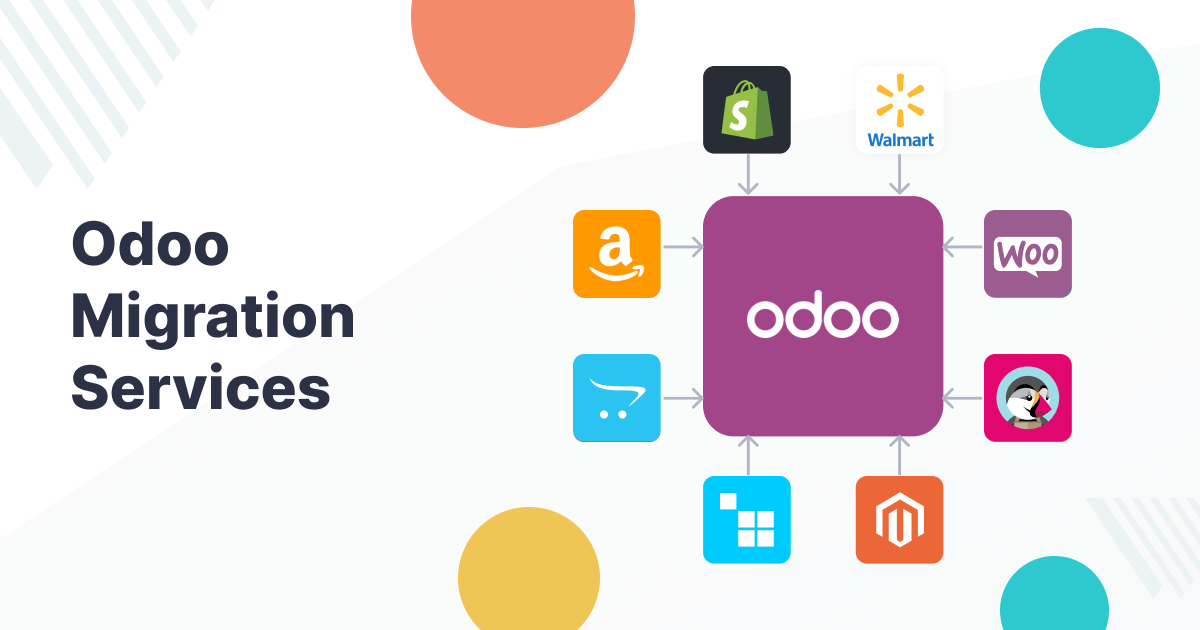Migrating to Odoo can unlock tremendous value for your business by streamlining operations, improving efficiency, and enhancing decision-making. However, to truly maximize your return on investment (ROI), the migration process must be well-planned and executed. A seamless transition to Odoo requires careful planning, selection of the right modules, expert implementation, and ongoing optimization. In this article, we will explore key strategies for ensuring your Odoo migration services in USA delivers maximum ROI.
1. Define Your Business Objectives
To maximize ROI, the first step in the Odoo migration process is understanding your business goals. Whether you’re aiming to boost sales, streamline inventory, or enhance reporting, aligning your Odoo implementation with these objectives is crucial. By clearly identifying what you want to achieve, you can tailor the migration to address your specific needs.
Consult with key stakeholders from various departments like sales, finance, and operations to ensure you capture all the pain points and opportunities. This will help you select the right modules and features to optimize, ultimately ensuring that Odoo supports the broader strategy of your organization.
2. Select the Right Modules
Odoo is a highly modular platform, which means you can pick and choose the applications that best suit your business. The right module selection plays a significant role in maximizing ROI, as it ensures that you’re focusing on the areas where improvements will have the most impact.
Begin by evaluating your current business processes and identifying the areas that need the most attention. For instance, if inventory management is a major pain point, consider implementing Odoo’s Inventory module to automate stock tracking and reduce manual errors. Similarly, if managing customer relationships is a priority, the Odoo CRM module can improve sales pipeline visibility and streamline customer interactions.
Focusing on the most critical modules for your business ensures that your investment in Odoo delivers the most value by addressing the specific needs of your organization.
3. Engage Odoo Implementation Experts
Successfully implementing Odoo requires more than just installing software—it involves configuring the system to meet your unique business needs. Engaging with experienced Odoo implementation consultants can significantly enhance your migration process.
These experts can guide you through the setup and customization of Odoo, from module selection to process automation. They can also help with data migration, ensuring that your information is accurately transferred without disrupting business continuity. Their insights and knowledge of best practices can help you avoid common pitfalls, such as improper configuration or poor system integration, which can lead to costly delays or operational issues.
With the assistance of qualified Odoo implementation professionals, you can ensure that your Odoo system is optimized to support your specific business processes, directly impacting your ROI by reducing errors and improving efficiency.
4. Clean and Prepare Your Data
One of the most critical aspects of an Odoo migration is ensuring the accuracy of the data being transferred. Migrating inaccurate or outdated data can cause disruptions in business operations and decrease the effectiveness of your new system.
Start by conducting a comprehensive data audit. Review and clean up your existing data to ensure it’s accurate and relevant. Remove duplicates, correct inconsistencies, and standardize formats to ensure that the migration process goes smoothly. Proper data mapping is essential to ensure that your old data is correctly transferred to Odoo’s structure.
Taking the time to properly clean and prepare your data before migration will save time and reduce errors once the system is live, improving both system performance and ROI.
5. Provide Comprehensive Training
A smooth Odoo migration is not just about the technical side; user adoption is equally important. If your team is not properly trained on the new system, it will be difficult to realize the full benefits of the migration.
Training is essential for ensuring that employees can efficiently use Odoo’s features and capabilities. Provide role-based training to address the specific needs of each department. For example, finance teams should receive training on Odoo’s accounting and reporting features, while sales teams should focus on CRM and order management.
Well-trained employees will be more confident in using the system, reducing the chances of errors and delays. The more your team understands and utilizes Odoo, the more efficiently the system will function, leading to greater productivity and higher ROI.
6. Conduct Thorough Testing
Before going live with your new Odoo system, testing is essential to ensure everything functions as expected. Testing helps you identify and resolve any issues before they affect your business operations.
Start with data validation to ensure that all the information has been correctly migrated. Then, move on to functional testing, where you test each business process (sales, inventory, finance, etc.) to ensure they run smoothly. User acceptance testing (UAT) is the final step, where end-users confirm that the system meets their needs.
Thorough testing minimizes the risk of errors and ensures that the system is stable from day one, preventing costly disruptions after the migration.
7. Optimize and Monitor Post-Migration
Once the Odoo system is live, the work doesn’t stop there. To maximize ROI, ongoing monitoring and optimization are essential. Regularly review your system’s performance, track key metrics, and gather feedback from users to identify areas for improvement.
As your business grows and evolves, your Odoo system should be optimized accordingly. This may involve adjusting configurations, integrating new modules, or enhancing existing features to keep up with changing business needs. Regular optimization ensures that Odoo continues to deliver value over time, increasing the long-term ROI of your investment.
Conclusion
Migrating to Odoo is a powerful way to enhance operational efficiency and streamline business processes. To maximize ROI, it’s important to understand your business objectives, select the right modules, engage expert implementation support, and ensure that your data is clean and well-prepared. Additionally, investing in training, conducting thorough testing, and focusing on post-migration optimization will help you realize the full potential of Odoo. By following these strategies, you can ensure a seamless migration process and unlock the maximum value from your Odoo system.
